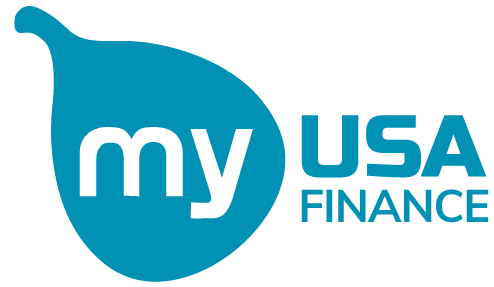When you need cash for an unexpected expense, a personal loan can provide the funds you need. Personal loans are unsecured, which means that you don’t have to put up collateral in order to get one. This makes them a popular option for people who need to borrow money.
So, how do personal loans work? We’ll explain the basics of personal loans and what you need to know before you apply.
What is a personal loan?
A personal loan is a loan you can use for almost any purpose. Unlike a mortgage or car loan, personal loans are not tied to a specific asset. Instead, they are based on your creditworthiness and loan repayment ability.
Personal loans are typically unsecured, which means that you don’t have to put up collateral in order to get one. However, this also means that the lender is taking on more risk, so interest rates on personal loans might be higher than other types of loans.
How a personal loan works
A personal loan can be used for any purpose, such as consolidating debt, financing a home improvement, or paying for a big-ticket purchase. When you take out a short term personal loan, you borrow a fixed amount of money from a lender and agree to pay it back over a set period of time, usually with interest.
How rates are determined
The interest rate on a personal loan can vary depending on your credit score, income, and other factors. Personal loans are usually unsecured, which means they don’t require collateral, such as a car or house, but they may have higher interest rates than secured loans.
When you apply for a personal loan, the lender will review your credit history and financial information to determine if you are eligible and what interest rate you will be offered. If approved for a personal loan, the funds will be deposited into your bank account, and you will start making monthly payments until the loan is paid off.
Small economic changes don’t heavily affect personal loan rates, like when the Federal Reserve increases interest rates.
Types of personal loans
There are many personal loan options to consider when it comes to borrowing money. Each type of loan can serve a different purpose, so it’s important to understand your choices before deciding which one is right for you. In this post, we’ll cover some of the most common types of personal loans.
Secured Personal Loans
A secured personal loan is a loan that requires collateral, such as a car or house. Because collateral is involved, lenders typically offer lower interest rates on secured personal loans due to the reduced risk. However, if you cannot repay the loan, you risk losing the asset you put up as collateral.
Unsecured Personal Loans
An unsecured personal loan is the most common type of personal loan. These loans do not require any collateral, making them less risky for borrowers who cannot afford to put up assets. Accordingly, lenders often charge higher interest rates on unsecured loans.
Common Uses of Personal Loans
Personal loans can serve various purposes, from consolidating debt to covering unexpected expenses. In this post, we’ll highlight some of the most common uses of personal loans.
Debt Consolidation
Debt consolidation is a popular use for personal loans. If you have multiple high-interest debts, like credit card balances, consolidating them with a personal loan can help you streamline your debt payments and potentially save money by getting a lower interest rate.
Expensive Events
Personal loans can be helpful when you’re facing one-time, unexpected expenses like a medical emergency, car repair, or home repair. They can also be used to cover expenses related to expensive events, like weddings or vacations.
Investing in Yourself
Sometimes, investing in yourself can require a financial investment. Personal loans can be a way to fund career training, education, or other investments that will pay off in the long term.
Small Home Improvement Projects
For small home improvement projects, like updating a bathroom or painting a room, a personal loan can be a helpful way to fund the project rather than using a credit card or dipping into savings.
Emergencies
Emergencies can come up unexpectedly, and personal loans can be a way to cover unexpected expenses when you don’t have savings or enough credit available.
Whether you’re facing a medical emergency or unexpected home repair, a personal loan can provide the funds you need to address the situation quickly.
How to Get a Personal Loan
Getting a personal loan can be a helpful way to cover unexpected expenses or consolidate debt. In order to get a personal loan, you’ll need to follow a few steps:
- Check Your Credit Score
Before applying for a personal loan, check your credit score. A higher credit score can help you secure better loan terms, such as a lower interest rate.
- Research Lenders
Research lenders and their loan terms, interest rates, fees, and payment options. Some lenders specialize in particular types of loans, so it’s important to choose one that suits your specific needs.
- Submit Your Application
Once you’ve chosen a lender, submit your loan application. You’ll typically need to provide personal information, proof of income, and other requested documentation.
- Compare Offers
After you submit your application, you’ll receive loan offers from lenders. Compare the interest rates, loan amounts, repayment terms, and any fees before choosing the best offer.
- Accept the Loan Offer
Once you’ve chosen a loan offer, review the loan agreement carefully before accepting it. Make sure that you understand the terms and payment schedule for the loan.
- Receive Your Funds
After accepting the loan offer, you’ll receive the loan funds. The time it takes to receive the funds will vary depending on the lender.
- Repay the Loan
After you receive the funds, you’ll need to repay the loan according to the loan terms. Make sure you have a plan to repay the loan on time to avoid late fees or damage to your credit score.
Common mistakes when using a personal loan
A personal loan can be a great way to cover unexpected expenses or consolidate debt. However, some common mistakes people make when using personal loans can lead to financial trouble. Here are some of the most common mistakes to avoid:
Borrowing more than you can afford to repay
One of the biggest mistakes people make when using a personal loan is borrowing more money than they can afford to repay. Before taking out a personal loan, make sure you have a plan to repay it on time and in full. Don’t borrow more than you can realistically afford to pay back, even if you’re approved for a higher amount.
Not shopping around for the best interest rates
Personal loan interest rates can vary significantly between lenders. Not shopping around for the best rates can result in higher interest payments and more money paid in interest over the life of the loan. Take the time to compare rates from multiple lenders to find the best deal.
Taking out a personal loan for non-essential expenses
While personal loans can be used for almost any purpose, it’s important to remember that they are still debt that needs to be repaid. Taking out a personal loan for non-essential expenses, like a luxury vacation or a shopping spree, can lead to unnecessary debt and financial trouble.
Not understanding the terms and fees
Before accepting a personal loan offer, make sure you understand the terms and fees associated with the loan. This includes the interest rate, any fees for late payments or prepayments, and the total cost of the loan over its lifetime. Not understanding the terms and fees can lead to unexpected expenses and financial strain.
Taking out personal loans to pay off credit card debt and then running up more debt
Using a personal loan to consolidate credit card debt can be a smart financial move, but changing spending habits is important to avoid running up more debt. Paying off credit card debt with a personal loan only makes sense if you stop using credit cards and plan to pay off the loan on time.
Avoiding these common mistakes can help you make the most of your personal loan and avoid unnecessary debt and financial trouble. Remember to borrow responsibly, shop around for the best rates, and always read and understand the terms and fees associated with your loan.
Alternatives to Personal Loans
While personal loans can be a useful way to access funds, they’re not always the best option for everyone. Here are some alternatives to consider when you need to borrow money.
Credit Card
A credit card may be a good option if you need a smaller amount of money. Credit cards can provide short-term financing and are typically easier to apply for than a personal loan.
However, interest rates on credit cards tend to be higher than those on personal loans, so it’s important to pay off your balance as quickly as possible.
Cash-Out Refinance
A cash-out refinance might be a good option if you own a home. This involves taking out a new mortgage for more than your current balance and using the extra cash for your needs.
However, this can come with higher fees and interest rates, and it’s important to consider the long-term impact on your mortgage payments.
Home Equity Line of Credit (HELOC)
Another option for homeowners is a home equity line of credit (HELOC). This allows you to borrow against the equity in your home, with interest rates typically lower than those of personal loans.
However, having a plan in place for paying back the loan is important, as failure to do so could put your home at risk.
Home Equity Loan
Similar to a HELOC, a home equity loan allows you to borrow against the equity in your home. This provides a lump sum of money with a fixed interest rate and a fixed repayment term.
Like a cash-out refinance, this can come with higher fees and interest rates than a personal loan, and missing payments could put your home at risk.
Drawbacks of Personal Loans
When it comes to personal loans, it’s important to consider the potential drawbacks before applying.
High-Interest Rates
One of the main drawbacks of personal loans is their high-interest rates. Since personal loans are unsecured, meaning they don’t require collateral, lenders often charge higher interest rates to compensate for the added risk.
This can make personal loans more expensive than other types of loans, such as secured loans.
Default Risk
There is also the possibility of default on personal loans. If you fail to pay your loan, your lender may take legal action, garnish your wages, or seize your assets to repay your debt. Your credit score and financial standing can be damaged in the long run.
Difficulty Qualifying with Low Credit Score
Additionally, if you have a low credit score, you may not be able to qualify for a personal loan or may be offered a high-interest rate. This can make it more difficult to repay the loan and can result in a cycle of debt.
It’s important to consider your financial situation and ability to repay the loan before applying for a personal loan.
If you decide to take out a personal loan, compare offers from multiple lenders to find the best interest rate and terms for your needs.
The Bottom Line
Personal loans can be an effective way to cover unexpected expenses or consolidate debt. Unlike other types of loans, personal loans are not tied to specific assets and don’t require collateral.
However, the interest rates on personal loans may be higher than other loans because lenders take on more risk when offering unsecured loans.
Personal loans come in various types, such as secured and unsecured loans. When applying for a personal loan, comparing the interest rates, loan amounts, repayment terms, and fees is essential.
Following these steps, you can choose the best offer that suits your financial needs. Whether you’re dealing with a medical emergency, an expensive event, or investing in yourself, personal loans can provide the funds you need to address the situation quickly.











